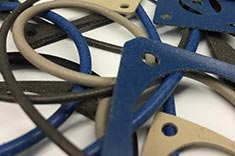EMI Shielding Products
- Custom Gasket Fabrication
- Connector Gaskets
- Bonded O Ring
- Custom Gaskets
- Conduct-O-Knit Knitted Wire Mesh
- Conduct-O-Seal Combo Gasket
- Conduct-O-Elastomer
- Conduct-O-Seal Oriented Wire in Silicone Gasket Material
- Conduct-O-Mesh Tape
- Conduct-O-Foam
- Conduct-O-Bond
- Optical Filters For Electronic Displays
- Shielded Vent Panels
- ESC Board Level Shielding
- 300 Series
Tips for Testing EMI Leakage
Any electronic gadget or device that you have is emitting electromagnetic interference (EMI). In large quantities, EMI can be dangerous for humans. Regulations have been made to ensure that industries are not producing a significant amount of EMI. Companies limit the EMI from their devices using EMI shielding. Another way that businesses help to protect against EMI is with an EMI gasket.

While EMI shielding precautions work to protect against interference, they are not foolproof. At times, the shielding could become damaged which will cause leakage. Luckily, some tests can be performed to make sure the EMI shielding is working efficiently and that no leaks are occurring.
One way to test your EMI shielding is with an open field test. This test only works on finished electronic devices. It is performed in an open space, free of any metallic equipment. With the help of antennas, you measure radiated field strength and conductive emissions.
Another form of testing is a Coaxial Transmission Line Test. This process tests the shielding effectiveness of a planar material. After a series of trials, you measure the EMI shields effectiveness by comparing the reading of reference and the load devices.
A shielded box test is another way to determine the usefulness and leakage of the EMI shielding. This method will only work on frequencies less than 500 megahertz. Using a sealed box, you measure the electromagnetic signals from inside and outside of the box. The ratio of the signals is the shielding effectiveness.
Shielding Gasket
One more way to test the efficiency and leakage of the EMI shielding is through a shielding room test. This method utilizes two shielded rooms with a separating wall between them. This process works if you want to evaluate a device’s susceptibility.
Related Reading- What are Radio Waves?EMI Shielding and RFI Shielding are of particular importance when it comes to telecommunications because radio transmissions can hinder the reception of a signal by a recipient if the signals are near the same frequency.
- Electromagnetic Radiation and The Human Body
- Electromagnetic Waves and Everyday Appliances
- Working with EMI and RFI
- EMI Shield Covers



